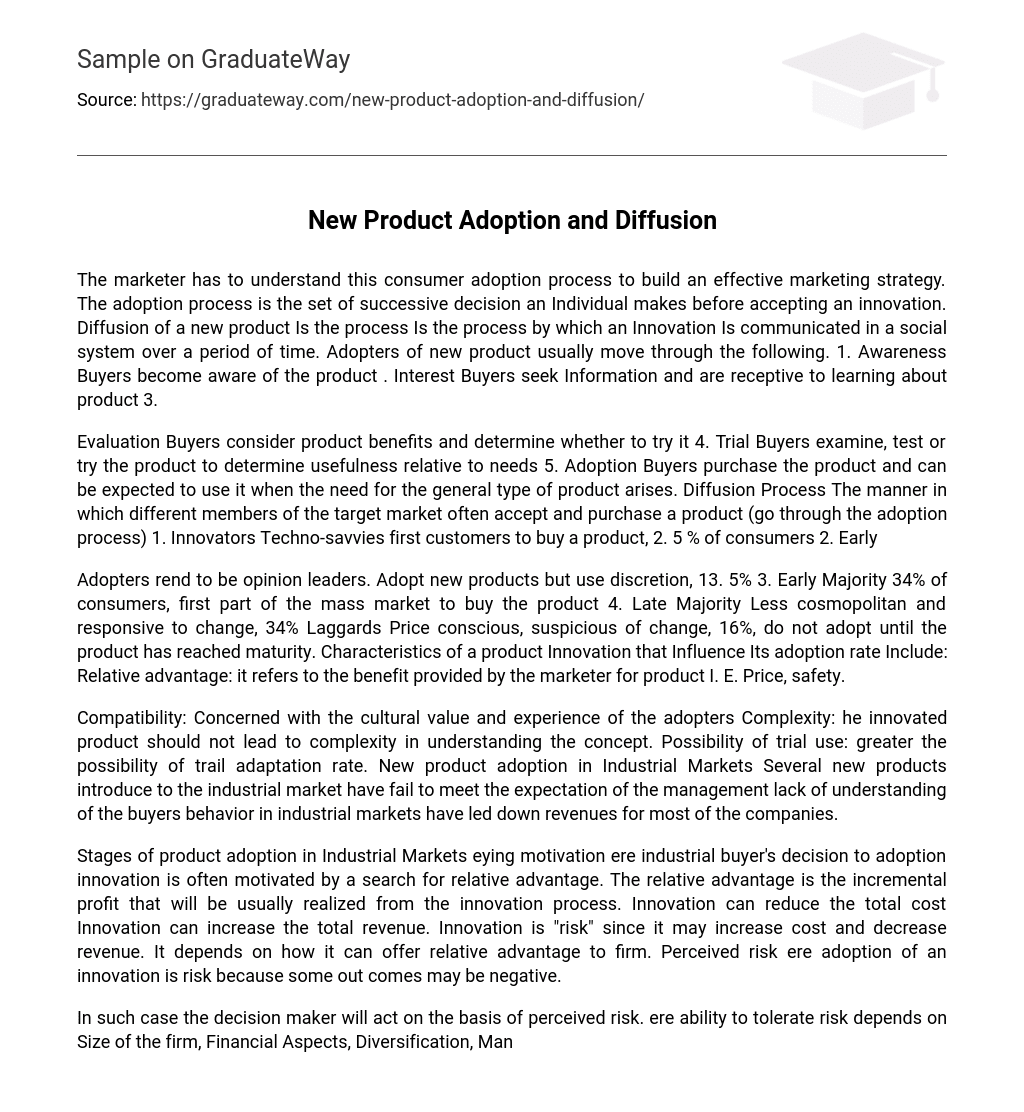The marketer has to understand this consumer adoption process to build an effective marketing strategy. The adoption process is the set of successive decision an Individual makes before accepting an innovation. Diffusion of a new product Is the process Is the process by which an Innovation Is communicated in a social system over a period of time. Adopters of new product usually move through the following. 1. Awareness Buyers become aware of the product . Interest Buyers seek Information and are receptive to learning about product 3.
Evaluation Buyers consider product benefits and determine whether to try it 4. Trial Buyers examine, test or try the product to determine usefulness relative to needs 5. Adoption Buyers purchase the product and can be expected to use it when the need for the general type of product arises. Diffusion Process The manner in which different members of the target market often accept and purchase a product (go through the adoption process) 1. Innovators Techno-savvies first customers to buy a product, 2. 5 % of consumers 2. Early
Adopters rend to be opinion leaders. Adopt new products but use discretion, 13. 5% 3. Early Majority 34% of consumers, first part of the mass market to buy the product 4. Late Majority Less cosmopolitan and responsive to change, 34% Laggards Price conscious, suspicious of change, 16%, do not adopt until the product has reached maturity. Characteristics of a product Innovation that Influence Its adoption rate Include: Relative advantage: it refers to the benefit provided by the marketer for product I. E. Price, safety.
Compatibility: Concerned with the cultural value and experience of the adopters Complexity: he innovated product should not lead to complexity in understanding the concept. Possibility of trial use: greater the possibility of trail adaptation rate. New product adoption in Industrial Markets Several new products introduce to the industrial market have fail to meet the expectation of the management lack of understanding of the buyers behavior in industrial markets have led down revenues for most of the companies.
Stages of product adoption in Industrial Markets eying motivation ere industrial buyer’s decision to adoption innovation is often motivated by a search for relative advantage. The relative advantage is the incremental profit that will be usually realized from the innovation process. Innovation can reduce the total cost Innovation can increase the total revenue. Innovation is “risk” since it may increase cost and decrease revenue. It depends on how it can offer relative advantage to firm. Perceived risk ere adoption of an innovation is risk because some out comes may be negative.
In such case the decision maker will act on the basis of perceived risk. ere ability to tolerate risk depends on Size of the firm, Financial Aspects, Diversification, Management aggressiveness, Optimism, Desire of growth. Information ere adoption of innovation by a firm is determined by its awareness of the innovation and attitude towards that innovation. Adoption process Awareness Interest Arial rime to adopt an innovation by a firm is influenced by:- Amount of information. Quality of Information Rule of the information available.





